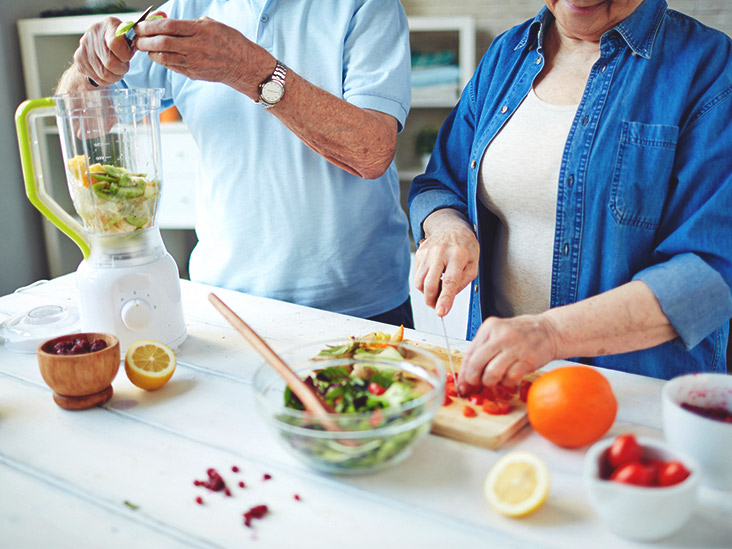
Nutrition in the Obese of the Elderly
Aging is associated with changes in body composition. Lean mass, mostly made up of skeletal muscle, is reduced by 40 percent between the ages of 20 and 70.
Nutritional care in old age is not just medical nutrition therapy and disease management and has expanded to focus on healthy lifestyles and disease prevention. Lack of attention to a healthy diet and more physical activity at all ages and increasing the life expectancy of the population will lead to staggering health costs.
Therefore, the emphasis on nutrition is never too late to promote health and prevent disease.
Obesity in the elderly
The rate of obesity among people aged 65 to 74 is higher than the rate of obesity among people aged 75 and older.
Obesity is associated with increased mortality and is involved in many chronic diseases; Such as:
• Type 2 diabetes
• Heart disease
• Uterine cancer, colon cancer, breast cancer, and other cancers
• Asthma and other respiratory problems
• Rheumatoid arthritis and disability
Obesity causes an exponential decrease in physical function that may lead to increased feelings of weakness.
Available data show that weight loss treatment improves physical function, quality of life and reduces obesity in the elderly.
Accordingly, weight loss treatments that maintain muscle and bone mass are recommended for obese seniors.
Lifestyle changes based on diet, physical activity, and behavior modification methods are very effective.
The goals of weight loss and control for adults are similar to weight loss and control for the general population and should include preventing further weight gain or maintaining weight loss in the long run.
Weight loss of 15% of total body weight over six months should be the primary goal, and then weight loss strategies should be applied.
Dietary changes include reducing the energy of 500 to 1000 kcal per day but should not be less than 1200 kcal per day.
Meeting the nutritional needs of the elderly on a low-calorie diet is vital. It necessitates the use of multivitamin-mineral supplements as well as nutrition education.
A healthy and balanced diet for the elderly
•Carbohydrate-rich foods such as sweet potatoes and brown rice
•Protein-rich foods such as salmon and beans
•Fruits and vegetables (five a day)
Also, prepare meals rich in the following nutrients:
Foods containing omega-3 fatty acids
Fish mainly contains omega-3 fatty acids; For example, sardines, tuna, mackerel and salmon, flaxseed, soy, canola oil, and walnuts
Nutritionists recommend consuming omega-3 fatty acids twice a week.
Foods rich in calcium
Calcium-rich foods are mainly dairy products such as milk, yogurt, cheese, green leafy vegetables, and calcium-fortified cereals.
The World Health Organization recommends that people over the age of 50 consume 1,200 mg of calcium daily. This amount can be provided by consuming 4 cups of fortified orange juice, milk, soy, or almond milk.
Foods rich in fiber
Fiber-rich foods include nuts, whole grains, whole-grain bread and, brown rice, brown bread, fruits, and vegetables.




